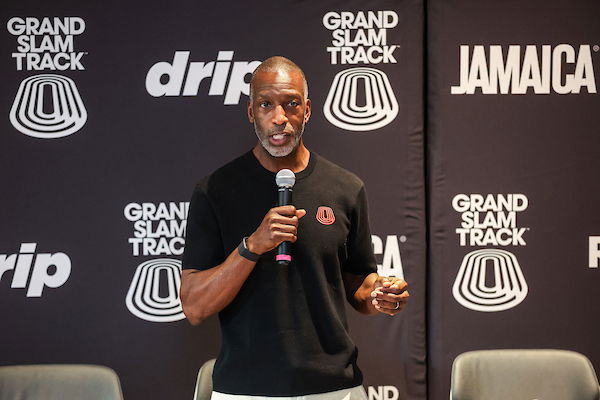

It’s been five days since the curtain closed on the much-hyped inaugural edition of Grand Slam Track — Michael Johnson’s bold attempt to revolutionize professional athletics. But instead of basking in unanimous praise, the question echoing through the world of track and field is… Did it deliver?
On paper, everything was in place: a world-class lineup, a flashy new format, and the crown jewel of Caribbean athletics — Kingston’s National Stadium. Jamaica seemed like the perfect launchpad. But as the dust settled, critics and fans alike found themselves looking at the empty stands rather than the scoreboard. The venue, historically buzzing with the energy of a thousand horns and flag-waving fans, looked — dare we say — sleepy! The lack of footfall in a place that once erupted for Usain Bolt and Shelly-Ann Fraser-Pryce? That’s a red flag nobody expected. So… what happened?
Theories are flying faster than a 9.7-second dash. Some blame poor marketing. Others cite confusing ticketing systems or a failure to connect with local culture. A few point fingers at the format itself — too polished, too Americanized, too… unfamiliar. Whatever the reasons, the criticism is growing sharper.
ADVERTISEMENT
Article continues below this ad
On Day One of Grand Slam Track, while the organizers were still riding the high of their shiny new league’s debut, one of track and field’s most respected voices was already delivering a stinging reality check. And he was doing it publicly. Patrick K. Magyar, the former Zurich Diamond League director and a name that carries serious weight in global athletics, took to LinkedIn with a post that sent ripples — no, shockwaves! His piece? Titled with precision: “From Grand Slam to Grand Flop – A Lesson in What Not to Do with Athletics.” Oof.
Magyar didn’t mince words. He ticked off the issues one by one — the disregard for key stakeholders, the overreliance on production, the alienation of the sport’s traditional heartbeat. And then came the knockout punch at the end, a quote that’s already being whispered in press rooms and groups: “If you disrespect half the track & field family… If it’s more about your ego than the sport… If you believe money alone rules athletics… Then what you create is not a vision. You create a Grand Flop.” But wait! Are those words harsh? Or necessary? Umm… Let’s check a few more lines written by Magyar in his post.

“I’m not just a meet director,” he wrote, “I’m a fan of the sport.” He made sure to acknowledge Michael Johnson’s legacy — not just as a name in the record books but as a defining force in modern track and field. He even recalled being there in person, in Atlanta, 1996 — watching in awe as Johnson shattered the 200m world record in those famous golden spikes. But the admiration had limits.
What’s your perspective on:
Did Michael Johnson's Grand Slam Track flop because it was too Americanized for global fans?
Have an interesting take?
That very performance, Magyar admitted, marked a turning point — not in celebration, but in suspicion. There was something that made him start asking questions. According to Magyar, Johnson’s demands for massive appearance fees soon followed. Magyar, who was tasked with building fair, fan-friendly meets, found himself boxed in by one athlete’s financial terms. His conclusion? Sharp: “Johnson didn’t care if other athletes got fair deals, or if meets were compelling for fans. As long as his fee was right, everything else was secondary.” Ouch.
It’s no wonder, then, that Michael Johnson’s reinvention as a league founder sits uneasily with Magyar. For him, it’s not just a new chapter, but it’s a rewrite of history that doesn’t sit well. So yes, bias? Maybe. But for Magyar, it may also be rooted in decades of experience — and a long memory. Talking about memory, there have been a few more incidents between the Grand Slam Track and Diamond League.
Grand Slam Track faces a few more stones from the Diamond League
On the surface, Peter Stastny’s words in a March media roundtable seemed polished, diplomatic — maybe even supportive.“Competition is good in many ways… We do welcome these new projects in general.” Sounds friendly enough, right? But wait for it. “[But] we do not welcome date clashes, which unfortunately seem to be happening in ’25… The roster of athletes is fairly big, but it’s not unlimited.” Now, that’s where it gets interesting. Because Stastny isn’t just some commentator tossing opinions into the wind. He’s Peter Stastny, the current CEO of the Diamond League, the global powerhouse of professional track and field. When he talks about “clashes,” he’s calling out Grand Slam Track. And the battleground? The 2025 calendar.
Here’s the showdown:
Grand Slam Track’s Miami meet is locked in for May 2–4.
Diamond League’s Shanghai meet? May 3.
In other words: ‘Game on.’
ADVERTISEMENT
Article continues below this ad
It’s a direct overlap that forces athletes to choose. And in a sport where appearance fees, exposure, and sponsorships are tightly linked to event participation, that’s no small matter. Stastny’s message: “Welcome to the sport… but play nice, or else.” And just in case the message wasn’t clear, Diamond League delivered a perfectly timed Instagram jab during GST’s inaugural weekend. A simple countdown post for their next meet, but the caption said it all: “Where champions are made.” Subtle? Maybe. Intentional?

ADVERTISEMENT
Article continues below this ad
Well, it looks like it! In the high-stakes PR chess game of global track and field, this was a queen’s gambit. So what we’re seeing isn’t just a calendar clash. It’s a slow-simmering turf war. One side is backed by legacy, tradition, and global structure. The other, by innovation, star power, and a hunger to shake things up. And, like any good race, the finish line is still a long way off.
ADVERTISEMENT
ADVERTISEMENT
ADVERTISEMENT
ADVERTISEMENT


Did Michael Johnson's Grand Slam Track flop because it was too Americanized for global fans?